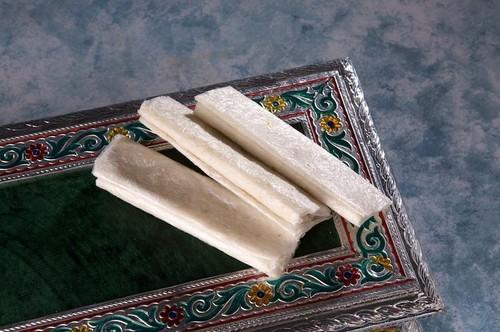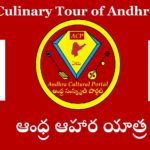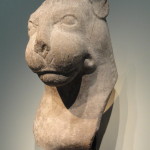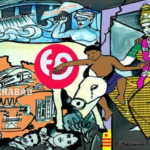After a long—almost pre-pandemic hiatus—Nripathi has persuaded me to return with this second installment in our Culinary Tour of Andhra.
As discussed in the Rebrand Andhra article, marketing is very important for any cuisine or culture. Sadly, Telugus are poor marketers and incorrigible consumers. Whatever is already “popular” or promoted by film stars or TV, they will eat. But people should have self-respect and a mind of their own.
If you are a Telugu, should you not promote proper Telugu food, as Telugu food? To do so, we need to properly brand our cultural aspects to improve recognition. While films like Baahubali have done an excellent job for the Telugu brand, we can’t put all the burden on one director. People too must chip in their share of work.

Speaking of marketing, some of you had asked, who is the bomma in our Aandhra Aahaara Yaathra pictures?! She is the personification of Andhra cusine: Andhraja.
No, not Indraja ( “manava,manava” ;P )
…but Andhra-ja .
Her mother is from Telangana, her father is from Kosta, and her husband is the Rayalaseema Raya. She is also fashionable, so she wears Kasulaperu and Edu varala jewelry. Of course, she is also designing her own fashion line of Andhra Haute Couture that is both traditional and modern. 😉
But, enough joking around. Many have been wondering why we rarely get to see Aristocratic Aandhra meals. The word is typically associated it with Mughlai (mostly Punjabi anyway) or Rajasthan (well-deserved), but the land of Satavahanas, Pallavas, Kakatiyas, and Raayas of Raayalavaariseema rarely gets its Royal due.
In fact, Rayalaseema Ruchulu have become a trademark of late, with restaurants now built around the concept. Telangana Thindi, is of course, no slouch, and specialises in mutton. Kosta is king of crab and other seafood. But Royal Aandhra (which refers to all 3 Telugu regions, and both Telugu states) as a whole is rarely promoted.
Aandhra Aahaaram in general was discussed in our Introductory article. Today, we will focus on something more upscale. Indeed, presentation is something very important and requiring additional thought and work. Rather than being mindless drones who cook and eat, it is crucial to embrace the Art of Cookery, and present with care.
Haute Andhra Cuisine is something that has been thoroughly neglected by our Karodpathis in the present time. They seem to take a rather self-effacing view of food and fashion, and associate “upscale” with all things foreign. Time has come to make the Aandhra Brand upscale too, or at least show the sophistication of Aandhra’s elites, ancient and modern.
Telugu cinema has long celebrated the food of the villages or even of modern cities, but these days we very rarely get to see how well our Kings & Queens once ate. Other than Ghatotkacha a century ago, how many famous Raaja vindus have we seen?
So on request from Nripathi (ahem, I mean Narapathi 😉 ), I have composed this 2nd installment of Andhra Aahaara Yatra titled Aristocratic Andhra Cuisine. My thanks to him for some of the historical references. Hai hai Nayaka!
Aristocrats are specifically tasked with protecting women, spiritual people, and cows.
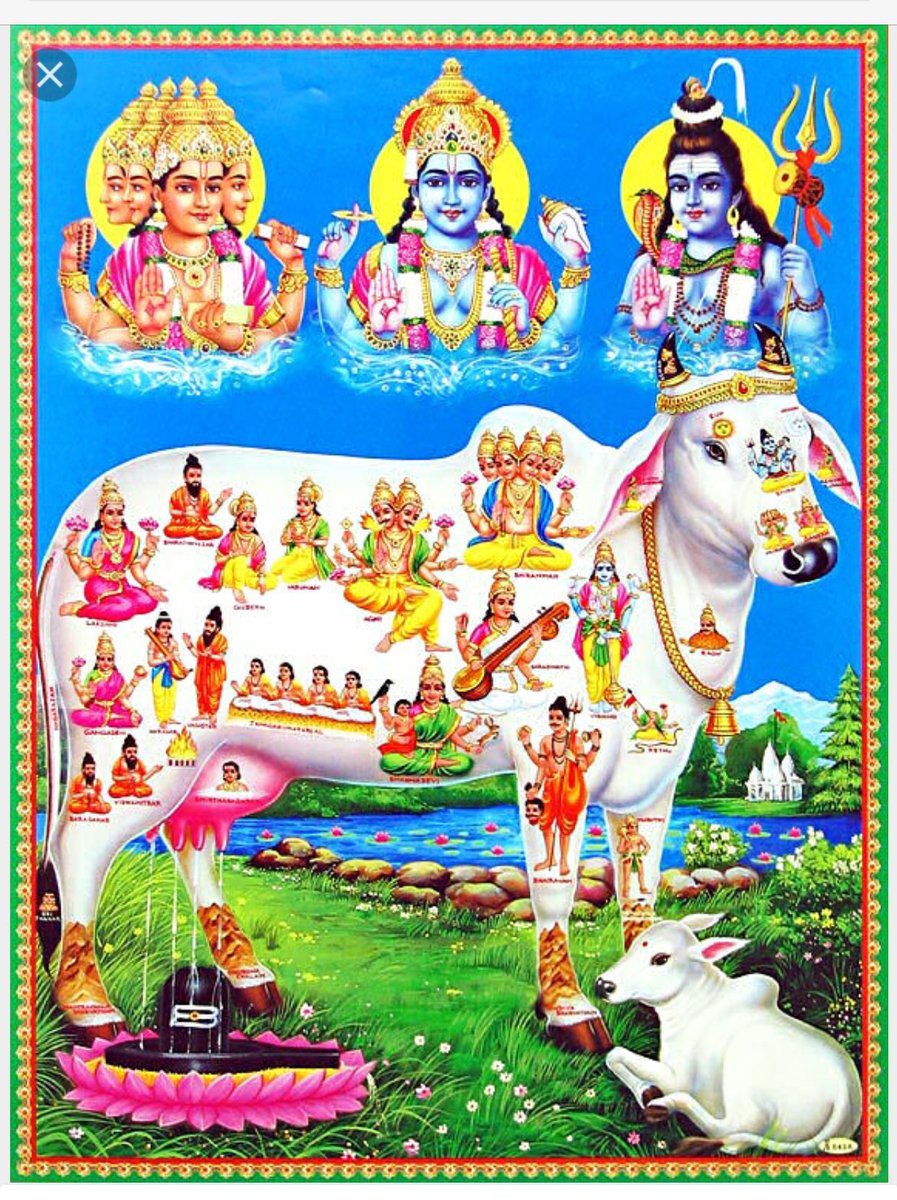
To find out what a true aristocratic meal looks like, we need to go to Raayalavaari Seema!
Rayalaseema Ruchulu
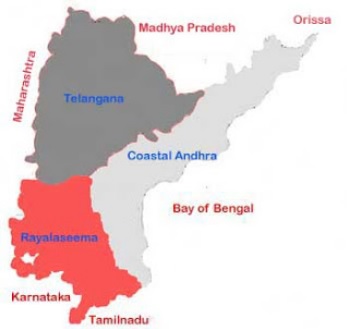
Today there is some confusion over the name Aandhra. As established by Pandith Kota Venkatachalam gaaru, Aandhra actually means Telugu. So it is inaccurate to refer to Kosta as “Aandhra” when all of Telugu-land was originally called Aandhra. Due to the course of history, Aandhra became divided into praanthas (Rayalaseema, Telangana, and Kosta (some would add Uttaraandhra or Kalinga-andhra). Each region picked up unique influences.
Rayalaseema gets its name from “Raayala vaari seema”, that is, the boundary of the Emperors (Raayas). Here is a Raaja Bhojanam (King’s Meal) for your viewing pleasure.
As discussed previously, it is only natural that the land of the Vijayanagara Raayas would have commonality with Karnataka. Specifically, the use of raagi is a key aspect. Here are some others:
Telangana Thindi
Telangana is known for its external influences, but there are elements that are unique to it and Telugu-land at the same times. The combination of ulavacharu (horse-gram) and mutton is one such:
Make every dish better with a dash Telangana Mamsam Kura! Tender mutton that melts in your mouth, enveloped in the rich spices of Telangana is all you need for an amazing Saturday. Do try it! #Ulavacharu #Foodie #Restaurant pic.twitter.com/hyOrFqyyCy
— UlavacharuRestaurant (@Ulavacharu_IND) March 30, 2019
The Government of India recently considered the claim of Khichdi as the “National Dish”. There is indeed a basis for it, as the famous combo of rice and pulse is something all can relate to. Telangana too features here in this Telugu dish known as Pulagam
Pulagam#recipe @ https://t.co/mqymGfNG7U
Vegan, gluten-free, high-protein, high-fibre Chilkewali Moong Dal Khichdi uses just two ingredients (3 when you count salt) and is a must-have in Andhra and Telangana for festivals like #Sankranti.
#vegan #vegetarian #Veganuary2022 pic.twitter.com/iwG78A5G8H— Aruna @ ãhãram (@ahaaram) January 11, 2022
Aristocratic Pulaos
Coastal Aandhra (Kosta) is the King of Crabs in this department—apropos given the crab mentality of its people ;). The ancient land of Saatavaahanas and Eastern Chaalukyas also features a specialty from the Vizianagaram Raajas.
Nothing says “Royal Aandhra” like Raaju Gaari Pulao. This one is ideal for meat eaters.
Of course, if you are from the seacoast, seafood may be more your speed.
For us vegetarians, however, this is a nice saakahaari pulao.
For those Vegetarians with a more adventurous palate, here is Methi (fenugreek) Pulao.
Here is my personal favourite. Arguably a new addition to AP, the tomato has taken its place at the forefront of food ingredients.
A key point to establish is the difference between biryani and pulao. The two words are used almost synonymously, which is incorrect. In the present time, due to bolly-marketing, biryani has been conflated with Aandhra food (which it is most certainly not). The term biryani itself is lazily used to brand any rice dish. Biryani comes from Persia and the Persian word “Beryan” indicates it. Ironically, there is no rice in the original dish (and like Falooda) is very different from the Indian implementation. Persian faloodeh, for example is actually green and sour (can you believe it?!), whereas the more saccharine Pink variety of India takes sweet to its limits. Similarly, Biryani in India today is very oily, and cooked in layers with meat and vegetable, and the rice is parboiled.
In contrast, Pulao uses minimal oil, and typically (though not always) features meat and vegetables cooked separately, and then added to boiled rice. One particular variation common in Aandhra, involves cooking of Pulao in coconut milk. This gives a very soft, sophisticated, and delicate texture that is lacking in biryani. Hyderabadi nizami biryani, in contrast, is a smorgasbord or convulsion of spices, bereft of precision and refined touch. It is as overrated as Pakistani serials and Coke studio.
Pulao, on the other hand, is more typically light and fluffy, and for those with a more subtle palate. The Aandhra variety, however, will naturally take kaaram level to another level.
Now, to each his/her own, but it is important for people to not conflate their preferred taste with heritage. The nizami culture is not native but colonist, while the Telugu language and Aandhra culture are native to undivided Aandhra. It is fine if either people celebrate their own culture and heritage. However, we are not Hyderabadis, but Aandhras—so let us celebrate ours instead of constantly promoting other brands. Therefore, it is Aandhra Pulao (as ‘pulao’!) that should be promoted at our restaurants and festivals.
Circling back to the beginning, if there is one movie that put Royal Aandhra back on the Map, then it is Bahubali. Though not very food centric, the Indic aesthetic (and by extension, the Telugu one) was emblazoned on celluloid and showed us just how Royals—native Royals—ate and enjoyed. But Rajamouli gaaru was not alone, Gunasekhar gaaru’s Rudhramadevi also provided a distinctly Telugu take on royalty. How do Kings and Queens, Naayakas and Naayakis all eat? That is what this article on Aristocratic Aandhra Cuisine covers.
Kingly Texts on the Culinary Arts
Feeling low about your weekend getting over? Our speciality Raju Gari Kodi Pulao is the perfect pick-me-up for you. #Ulavacharu #Pulao #Food pic.twitter.com/fJjm0FUZiQ
— UlavacharuRestaurant (@Ulavacharu_IND) March 26, 2017
There were many masters of food preparation, perhaps none more famous than that mighty Pandava Bheemasena. His appetite for feats of strength was matched only by his literal appetite for feasts of savories. Those familiar with the film Maya Bazaar might enjoy this song, which captures the spirit (though Ghatotkacha will stand in for his father here).
While Bheemasena is credited with a text called Bheema Paaka Sastra, it is the Paaka Darpana of King Nala (of Damayanti fame) that is the most ancient text we have recovered to date.
Nala wasn’t the only King with culinary sophistication. King Somesvara III of the Western Chalukya dynasty of Karnataka wrote the well-known work Abhilashithartha-chinthaamani. Better known as Manasollasa, meaning ‘refresher of the mind’, it is a veritable tome on not only knowledge, but also the pleasures of Royalty—with food naturally included in it. At 100 chapters divided among 5 books, it is a topic for another article.
Nala’s conversation with Maharaja Rtuparna of Ayodhya and subsequent employment in Kosala’s Royal Kitchen gives us insight into not only a mature and even Imperial Indic Cuisine, but also the continuity of tradition from that ancient time to present-day (and all-India to Aandhra). Here is what he had to say:
Asminnaarthe mayo’kaari grantho leka hithaaya cha|
loka paala-prasaadena paakadarpanaaamathah||
Tasyaava-lokanenaiva drsyanthe vividhaah kriyaah |
Soodasya lakshanam thaavad vakshye samkshepatha prabho || sl.22
O lord (prabhu) king Rtuparna. I have composed a trea-tise entitled Paakadarpana in this regard by the grace of gods (lokapaalas) for the benefit of people. All the process of (cooking) would be conspicuous by going through it. Now, I shall narrate the characteristics of cook (sooda) succinctly).
The waiter-at-meals (parivesaka) should attend to ablu-tions…followed by cleanliness of the feet and hands. He should be a fulfiller of culinary desires, attentitive to mind, firm/adherent, familiar with the timing of the meals of the king. Thereafter, he should serve the meals and food-prepara-tion in set order having come to know the appropriate time set for a king and considering its wholesomeness. [2,9]
The cook is referred to as sooda and the waiter as parivesaka. Both are required to have good qualities and practice the utmost cleanliness. [2, 8] Nala then outlines the work discussing various aspects of food taxonomy, dividing his work into 16 aspects: boiled rice (odana), pulses/broths (soopa), clarified butter (sarpis), curries (vyanjana), meat (maamsa) and vegetables (shaaka), semi-hard food (bhaksya), sweet rice dish (kheer), elixir (rasaayana), syrup (paana), soup (yoosa), lickable foods (lehya), beverages (paaneeya) milk (ksheera), curd (dadhi) , and butter-milk preparations (thakra). [2,9]
Andhra Brinjal Fry with a Fenugreek Flavour | Menthi Podi Veysina Vankaya Kura#recipe @ https://t.co/0UO97ry4W0
I absolutely adore this brinjal stir-fry and make it in 2 different ways; here is the simplest version.#Brinjal #StirFry #AndhraPradesh #Vegan #Vegetarian pic.twitter.com/ppcX5By7JU
— Aruna @ ãhãram (@ahaaram) January 16, 2019
Shigruphalam (drum-stick), plantain (kadhalee), audambara (Indian fig), tiktaalaabu (bitter gourd), are all vegetarian options and their dishes all discussed as well. For sake of familiarity, a recipe for a brinjal (vrnthaakam) dish will be described here:
“Method of preparing the vegetable of Brinzal and its properties. The lovely young fruit of brinzal should be taken and its upper portion should be cut by a sharp-edged knife. After cutting the brinzal into two parts, it should be dropped into a pot filled with water. The round brinzal fruit should be cleansed by the water and it should be dipped into the water medicated with ginger. It should be mixed with asafoetida, Kaayaphala (Kaidarya) and coriander powder. It should be added by the pieces of garlic and ginger and it should be kept on fire. The round brinzal fruit cut into pieces should be kept in hot water for a while and it should be brought out of the water. After making the paste of spices containing black pepper coriander, cumin seeds (jeera) mixed with ripe tamarind and curd should be pasted on the pieces of brinzal fruit and it should be fried in cow’s ghee (clarified butter). After taking it out, it should be made fragrant with the camphor. Hereafter it should be kept in clean pipe of puga-putta boiling ghee. After taking out it should be eaten.” [1, 38] It is praised as “an alleviator of Tridosha” and an enhancer of strength. [1, 38]
The Royal Hunt
“Hunting was a favourite pastime of kings and nobles. Telugu poems of this period describe very elaborately and in vivid colours the game and the mode of hunting wild animals and birds, and also mention the various implements and weapons used in hunting.” [5, 438]
The Royal Hunt is a tradition that dates back to ancient India. Aandhra too featured prominently in this regard.
“Contemporary works spoke of other hunting expeditions near water sheds or a tank in the forest, where deer, falcons, cranes, pigeons, and other water birds were killed. Fishing of different varieties, viz. Korraminu, Vaaluga, Bedasasambu, Velimetta Godise, Royya, Kuntumukku, etc. are also described.”[4, 112]
Wild boar, as shown above, is nevertheless the most succulent of choices for non-vegetarian rulers. The Kings and Naayakas of Aandhra were no exception. But to mix it up, the Aristocracy would also enjoy egg too.
Kodi Guddu Pulusu: Andhra Style Egg Curry http://t.co/9ZgjTEcjbH #andhra #telangana #recipes #indianfood #eggs #curry pic.twitter.com/5PHpTIq8Fn
— Aruna @ ãhãram (@ahaaram) July 15, 2015
But for us vegetarians there were other options.
Royal Crops
Grains were commonly consumed by queens and kaakammas alike.
“Kodrava and vreehi are the only varieties of paddy mentioned in inscriptions of the early dynasties in the coastal Andhra countgry. Aadi, mentioned in some of the records of the Eastern Chalukyas, is also a variety of grain…Varieties of praasangu (prasangi) and raajannam seem to be common. They are referred to in other Telugu works also of the period. Another good variety of rice is kappurabogam. Richer classes consumed good varieties of rice…people in the interior, generally subsisted on raagi and cholam.” [5, 373]
Other crops that featured in meals and garnishes were as follows:
“Besides paddy, there were other irrigated crops known as garden crops. Chief of these were sugarcane, betel-vine, and plantain. Arecanut and cocoanut palms were also raised, and probably occasionally irrigated. Mango and jack plantations were widely grown, as they are even now, in the Konamandala (Amalapuram and Rajole taluks of the East Godavari district), the gardens of the Andhra country. Vilasa in the Konadesa, granted to brahmans by Prolaya Naayaka, shone with very fertile fields fit for rice and sugarcane cultivation and with gardens of betel-vine, plaintain, mango, arecanut, jack, etc.” [5, 374-375]
Here are some other crops dating back to the Reddi Raajyam.
“We are told that the village of Vemavaram granted by Allaya Vema, was full of groves of cocoanut palm, arecanut, jack, mango, and plantain, and was abundant in crops, such as sugarcane, paddy, sesame, chick-pea and kidney-bean.” [5, 375]
All these crops naturally go on to make excellent drinks:
Beverage (Paneeyamu)
No aristocratic meal is complete without a proper beverage. Although copious amounts of water (and buttermilk!) are no doubt required to enjoy a spicy Aandhra meal, there are other, more tastier options too.
Erroneously called “sharbat” today, the Sugandhi Paneeyam is an excellent Ayurvedic concoction, which is good for liver and digestion. Cool off with this ice cold replacement to unhealthy “cool drinks” and faloodas.
Interesting, the Paaka Darpana of Nala specifies how the Royal Pitcher should be preserved:
“Question of the King Rtuparna regarding the selection of pitcher. The King asked Nala as to how the selection of Pugapatta is done for cooking despite availability of various pots made of Gold etc. ” [2, 93]
Nala replies saying that the Royal Pitcher must be kept fragrant with flowers and protected from pollution and pests. It should be tied with clean linen and fanned by palm leaves.
Sweets (Madhurabhakshyalu)
Originally, an aristocratic sweet due to its laborious process, Atreyapuram’s Pootha-rekhalu is a second time entrant, but a first rate addition to any meal.
Here is a variation on an old classic:
Introducing Putharekulu, a unique and delicious sweet from Andhra Pradesh! Made with rice flour, jaggery, dry fruits and home-made pure ghee. Learn more about this traditional dessert on our website https://t.co/v3IWzTKsQ1 #Putharekulu #AndhraPradesh pic.twitter.com/Btpp5D6RDQ
— Atreyapuram Putharekulu (@atpu_in) April 4, 2023
And finally, here is a new entrant to add variety to your Andhra sweets:
Chalimidi, is an Andhra dessert made with rice and jaggery usually made during festivals. This Holi try the Chalimidi or just make it as a weekend dessert and your family will love every bite of it. Here is how you can make this dessert -http://ift.t… https://t.co/FjXloMBsbD pic.twitter.com/co7XWuFLlU
— Archana Doshi (@archanaskitchen) February 23, 2018
Now you know how to eat like a true Royal Aandhra. So next time someone starts going gaga over billion boring biryanis, tell them this: In Aandhra, the aristocrats eat Pulao—Raaju gaari pulao! 😉
Yesterday's dinner was a festival of sorts. Enjoy spicy, flavorful #Rayalseema food in #Hyderabad?
You will love this Curated by Home cook and executed by a commercial space menu ☺️Rayalseema Ruchulu, Jubilee Hills.#AhaRayalseema pic.twitter.com/JFsPAH471h
— Arvind Ramachander 🐾 (@arvindia4u) October 13, 2019
References:
- Delicious Recipes from Andhra. Jaico Publishing House: Delhi. 2013
- Paka Darpana. Varanasi: Chaukhambha Orientalia. 2013
- The Essential Andhra Cookbook. Penguin Books: Gurgaon. 2014
- The Andhra Culture during the Kakatiyan Times. Delhi Eastern.1997
- History of the Reddi Kingdoms.Delhi:Facsimile Publ. 2015


